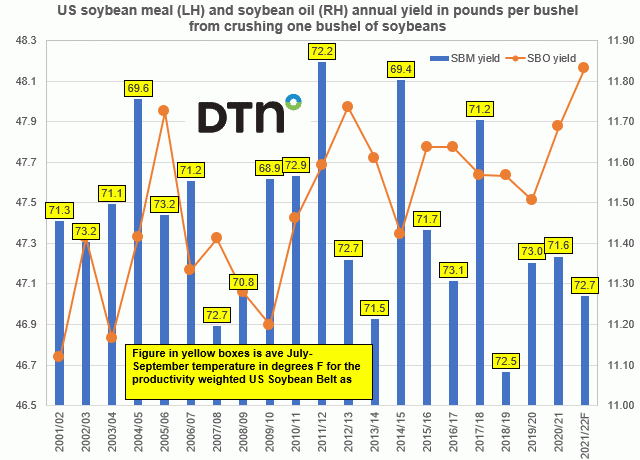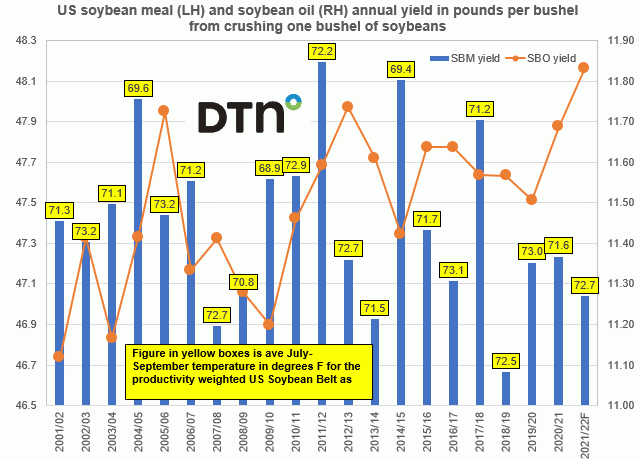Fundamentally Speaking
Soybean Oil/Soybean Meal Yield Linked to Temperatures
In a prior blog we noted that in the January WASDE report the 2021/22 extraction rate for soybean oil was raised by 0.08 pounds of oil per bushel to 11.83 and lowered by 0.2 pounds of soybean meal per bushel to 47.0.
Consequently, the production estimate for soybean oil was raised by 175 million pounds to 25.91 billion and lowered for soybean meal by 200,000 short tons to 51.5 million.
We had speculated at the time that this change in both the soybean oil and soybean meal yield was apparently due to the hot Midwest summer as the general thinking is that warmer than usual summer temperatures result in soybean oil yields being enhanced while the opposite has been observed in soybean meal yields.
P[L1] D[0x0] M[300x250] OOP[F] ADUNIT[] T[]
To illustrate that, this chart shows the annual U.S. soybean meal yield on the left-hand axis and soybean oil annual yield in pounds per bushel on the right-hand axis from crushing one bushel of soybeans.
The figure in the yellow boxes is the average July-September temperature in degrees F for the productivity weighted U.S. Soybean Belt as given in the NOAA database.
The U.S. had one of its hottest summers (July-Sep) in history and the same for most areas of the country including the productivity weighted U.S. Soybean Belt which encompasses some of the biggest Midwest states that have a large number of soybean crushing plants.
This year's implied soybean oil yield at 11.83 pounds per bushel is the highest ever and comes when the 2021 average July-Sep temperature in the productivity weighted U.S. Soybean Belt was 72.7 degrees Fahrenheit.
Also seeing high oil yields in other hot years such as 2005, 2012 and 2016.
Meanwhile this year's implied soybean yield at 47.04 pounds per bushel is the fourth lowest since 2001 as other hot summers resulted in low soybean meal yields in 2018 and 2007 while some of the highest soybean meal yields have come in years of cool summers such as those seen in 2004 and 2014.
We should note that the relation between soybean product yields and summer temperatures a loose one with the correlation with soybean meal a negative 48.9% and that for soybean oil a positive 53.8%.
(c) Copyright 2022 DTN, LLC. All rights reserved.





Comments
To comment, please Log In or Join our Community .